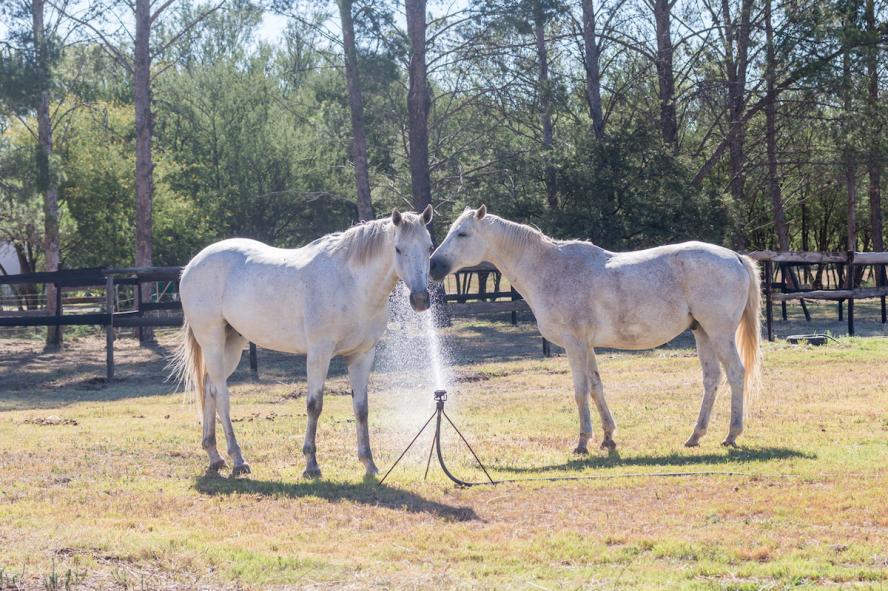-
About
- Leadership & Faculty
- News & Events
-
Academics
- Graduate
- Advanced Clinical Training
- Continuing Education
- Academic Departments
- Academic Offices
- Simulation Experiences
-
Student Life
- Offices
-
Research
-
Hospitals & Clinics
- Emergency Care
- Hospital Services
-
Community Outreach
- Volunteer
Keeping Your Horse Cool In the Summer Heat
Things To Know

During the summer months, it is important for horse owners, riders, and trainers to pay extra attention to the well-being of their equine athletes during periods of high heat and humidity. The combination of intense exercise and elevated temperatures can put any athlete, including horses, at risk of heat-related complications. Below are some tips to help keep your equine athletes safe, comfortable, and cool during the hot summer days.
Here are signs to watch for in your horse that could indicate they are too hot:
- Elevated body temperature: A horse with heat stroke will have an abnormally high body temperature. Studies looking at Standardbred race horses and endurance horses showed peak body temperatures associated with competition averaged 102°F (Ref 1). When body temperatures increase over 103°F (39.4°C) there is increasing concern that your horse is not able to regulate their temperature adequately. If the temperature rises above 106°F then clinical signs of heat stroke (see below) will occur. Use a rectal thermometer to measure the temperature – do not rely on how warm the skin feels.
- Profuse sweating or lack of sweating: While excessive sweating is a sign that your horse is overheated, in some cases, horses may stop sweating altogether. This is actually worse as it means that the horse’s body is no longer using one of its key mechanisms to cool down.
- Increased respiratory rate or effort: Horses experiencing heat stroke may display an increased respiratory rate (normal 8-16 breaths per minute) or show signs of respiratory distress (shallow breathing or excessively deep breathing).
- Increased heart rate: A horse's heart rate (normal 32-44 beats per minute) will be elevated during heat stroke as their body tries to cool down. This is most easily measured with a stethoscope, but a pulse can also be palpated on either side of the fetlock.
- Weakness or lethargy: Overheated horses may appear weak, fatigued, or even uncoordinated.
- Dark urine: Dehydration will cause the horse to try to physiologically conserve water, and the urine produced may be decreased in amount and appear darker in color than normal.
If your horse is overheated with an elevated temperature and one or more of the signs noted above, the following steps should be taken:
- Consult with your veterinarian. This is always an important step as there are other conditions that can have similar signs as heat stroke but require different types of treatment.
- If currently exercising, stop and start to cool down your horse.
- Move to a shaded area and/or well-ventilated area.
- Cold hosing, particularly over the large vessels of the neck and limbs can help to reduce not just the surface temperature, but also cool the blood returning to the body’s core.
Dr. Thomas Jenei is an Associate Clinical Professor in the Department of Clinical Sciences and Director of Cummings School of Veterinary Medicine’s Hospital for Large Animals.
REF 1: Verdegaal EJMM, Howarth GS, McWhorter TJ, Boshuizen B, Franklin SH, Vidal Moreno de Vega C, Jonas SE, Folwell LE, Delesalle CJG. Continuous Monitoring of the Thermoregulatory Response in Endurance Horses and Trotter Horses During Field Exercise: Baselining for Future Hot Weather Studies. Front Physiol. 2021 Aug 26;12:708737. doi: 10.3389/fphys.2021.708737. PMID: 34512382; PMCID: PMC8427666.